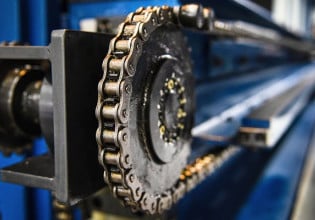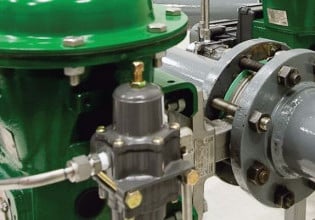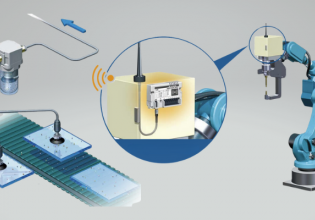Origin Story: Meet Unimate, the First Industrial Robot
Most commercial control technologies have fascinating histories, especially industrial robots. Here’s the story behind the development of Unimate, the world’s first.
The year was 1961. One day, a General Motors engineer walked into an assembly plant in New Jersey and started his shift. But something was different on the plant floor that day. In one area of the plant, an assembly line worker was tasked to move diecast parts and weld them onto a part of an auto body. But looking over toward the workstation, something was off. Something, someone was different.
What is an Industrial Robot?
Mixed among the various industrial processes of the world, many jobs fulfill one or more of the so-called four “Ds,” these being dull, dangerous, dirty, and difficult. For automotive manufacturing, “difficult” and “dangerous” lead the list, with many parts being extremely heavy, and hard to lift, even for a team of people. Also in the environment are a wide variety of emissions from welding gasses, paint fumes, extreme temperatures, and fast-moving assembly lines. All of these conditions create hazards to the life and limbs of workers. It’s a dangerous place, responsible for harming and maiming people since the inception of automotive manufacturing in the early part of the 20th century.

Figure 1. Unimate, the very first industrial robot. Author’s image
I Robot, Unimate
But for this engineer, on that day, a new era had just begun. Bolted to the floor was a brand-new invention, driven by hydraulic cylinders and some of the most advanced electrical controls of the time. The device? The first patented industrial robot arm, Unimate.
The brainchild of Robert DeVol and Joseph Engelberger, both visionaries sought to bring higher efficiency and reduce the risk of harm to manufacturing, and build a better future. Since then, these researchers have since received high honors, including being inducted into engineering and robotic Halls of Fame for their developments in the field.
How Did Unimate Come to Be?
Surprisingly, the programming strategy for Unimate closely resembled the methods engineers use today. However, not everything is similar, and more than 60 years later, fortunately, the input interfaces have become much more practical and user-friendly.
Understanding the mission of a robot, programming is simple: Move the robot from one point to another, along the correct path and at the proper speed, while activating and de-activating the end tool at the proper points.
This very first robot used linear actuators to control the motion of the arm. Due to the limited stroke of a cylinder (compared to motors), the arm’s range of motion was limited. But that served the purpose well enough, being adequately flexible to reach all required points in the program.

Figure 2. Inside the main base joint of the Unimate robot arm, with all of the hydraulic lines clearly visible. Author’s image
Although Unimate is a robotic arm, it lacked many of the visual qualities we find so familiar in the 6-axis articulated arm structures of today’s industrial and collaborative bots. Most of the heavy cylinders, for example, were placed as close to the base as possible, so the center of gravity was as far from the end of the arm as possible.

Figure 3. Looking up into the underside of the base joint of the Unimate arm. Author’s image
The end of the arm emp[loyed rotational joints, just like modern designs, capable of holding a tool. The very first Unimates to be applied to automotive manufacturing were tasked with part handling and welding, not unlike the vast majority of industrial robots we work with today.
How to Train a Robot: For the First Time
As mentioned, critical considerations for programming manufacturing, and assembly robots have existed since their earliest beginnings, but accomplishing that back then was very different than it is today.
When you program a modern robot on a teach pendant, you jog to a point, save that point, and select various extra parameters for the motion such as speed, motion type (linear or joint moves, for example), point termination, offsets, etc. These can also be easily modified after the initial program because you can see the parameters listed on the screen of the pendant.
However, before the advent of direct human inputs, training robots to do what they was a much more involved and intensive process. Instead of grabbing it and guiding it on what to do, an engineering team had to manually set switches, timers, and other motion controls to program and “teach” it what to do. Once the save point button was pressed, you were done. To design a program, rows of selector switches were placed in the correct position, and the point of movement was saved. Up to eight programs could be saved this way. The operator would then select the correct program to begin the cycle.

Figure 4. The programming console of Unimate. This is roughly equivalent to the teach pendants of today’s robots. Author’s image
How Did They Connect Unimate to Other Systems?
A robot can be useful as a standalone device, but in an automotive manufacturing facility, this isn’t necessarily practical. An assembly line is no place for a robot that is blind to other operators and nearby processes. However, when Unimate was developed it predates nearly every communication system: Ethernet, Modbus, CAN bus, USB, pretty much everything. The only signals that existed at that time were the simple discrete and analog voltages that “handshake” data from one machine to another.
Fortunately, most robots only require the connection of a few handshake signals. A few to let the robot know when a part is ready (perhaps more than one type of part of infeed channel), and one or more to let the downstream devices know that the robot has finished its task. Even Ethernet and similar channels are simply a convenient way to pass discrete and analog handshake signals.

Figure 5. Unimate was equipped with numerous terminal blocks for sharing general-purpose I/O (GPIO) signals. Author’s image
Unimate’s control circuits could accept external signals through the I/O terminals on the side of the cabinet. Using these, a robot could communicate with any device nearby.
Note, however, that the appearance of Unimate also happened before the first PLCs came to market, predating them by many years. At the very beginning, there wasn’t much external digital equipment on the factory floor that could even use a handshake signal. Integrating robots into other equipment has been an evolving process that could only begin as industrial control devices were developed, not before.
What’s Next for Robots?
The future of robotics is only limited by the imagination of engineers. Unfortunately, it can sometimes be difficult to expand beyond our confines of comfortability; we improve the devices we are familiar with, but it is a remarkable achievement to invent something brand-new entirely. We have seen the appearance of mobile and collaborative robots, four and even two-legged walking robots.
To imagine what comes next is a very exciting prospect indeed!
If you have any personal first-hand experience with programming a Unimate robot, I would love to learn more. Feel free to comment on your experience or directly reach out to [email protected] and help us learn more about the history of robotics and control.






